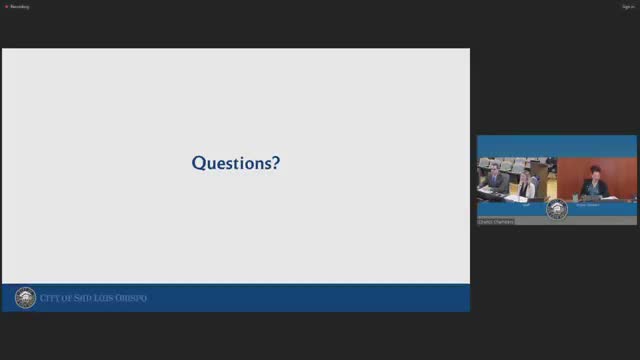Public comments address San Luis Obispo's water rate increases and Cal Poly's impact
June 19, 2025 | San Luis Obispo City, San Luis Obispo County, California
Thanks to Scribe from Workplace AI and Family Portal , all articles about California are free for you to enjoy throughout 2025!

This article was created by AI using a video recording of the meeting. It summarizes the key points discussed, but for full details and context, please refer to the video of the full meeting. Link to Full Meeting
During the meeting, council members reviewed the intricacies of the low-income customer assistance programs available through Pacific Gas and Electric (PG&E). The CARE program offers a 20% discount, while the Family Electric Rate Assistance (FERA) program provides an 18% discount, now extended to households with one to two members. This assistance is crucial for many families struggling to manage their utility bills amidst rising costs.
Public comments highlighted the complexities of managing a full-service city. Steve Barish, a local property owner, raised concerns about the proposed rate increases, emphasizing the compounded nature of these hikes over the years. He pointed out that while the city provides assistance to low-income families, those who do not qualify face significant financial burdens. Barish urged the council to consider the impact of Cal Poly's recent dormitory expansions on water and sewer usage, suggesting that the university's contributions to the city's utility demands should be closely examined.
In contrast, Rachel Whelan from the SLO Chamber of Commerce expressed support for the proposed rate changes, acknowledging the necessity of managing operational costs and ensuring the sustainability of the city's utility infrastructure. She recommended strategic initiatives, such as prioritizing recycled water use and enhancing tiered water rate structures to encourage conservation among residents and businesses.
The council also discussed Cal Poly's unique water supply situation. It was clarified that the university has its own water source from the Whale Rock Reservoir and pays for its treatment and distribution through the city's facilities. This arrangement means that while Cal Poly contributes to the overall water usage, it does not draw directly from the city's reserves.
As the meeting progressed, the council members recognized the importance of transparency and public education regarding the rate structures and water management strategies. The discussions underscored the delicate balance between maintaining essential services and addressing the financial realities faced by the community.
With the council's commitment to monitoring the situation closely, particularly regarding Cal Poly's water reclamation project, residents left the meeting with a mix of hope and apprehension. The decisions made in these chambers will undoubtedly shape the future of San Luis Obispo's water and sewer services, impacting both the environment and the wallets of its citizens.
Converted from 06/17/2025 - City Council Meeting meeting on June 19, 2025
Link to Full Meeting
Comments
View full meeting
This article is based on a recent meeting—watch the full video and explore the complete transcript for deeper insights into the discussion.
View full meeting